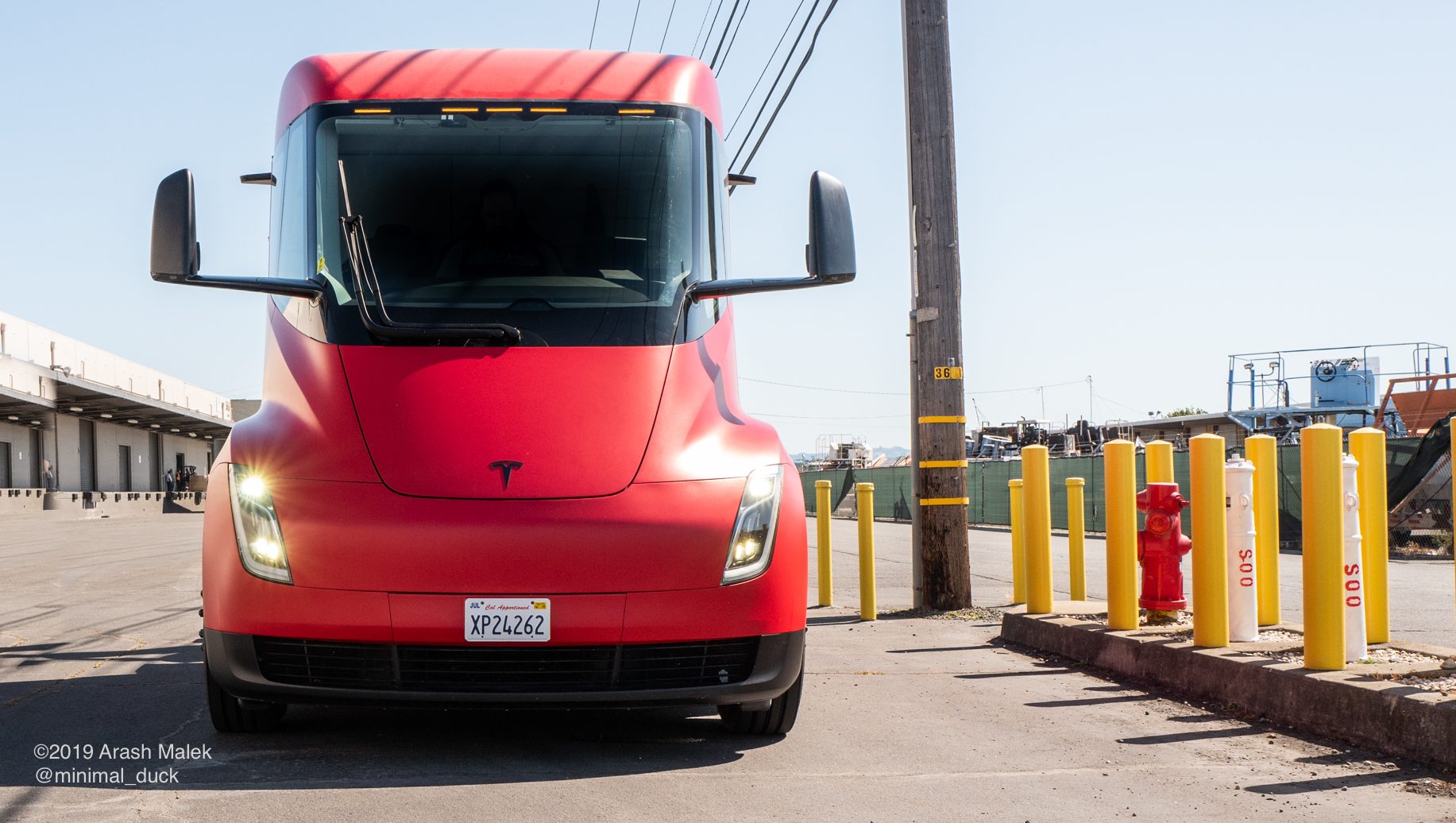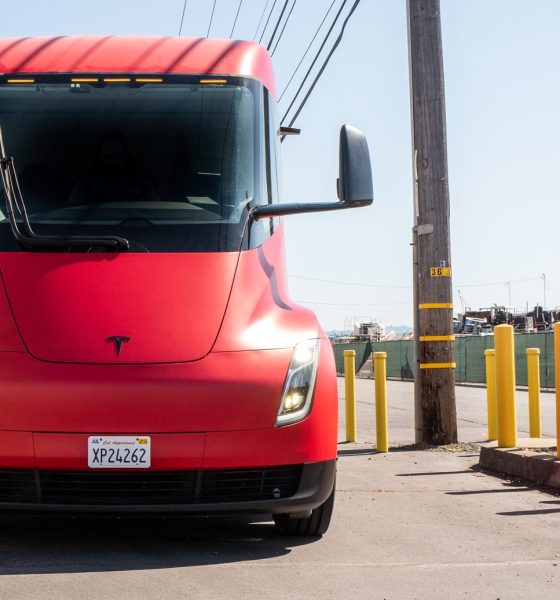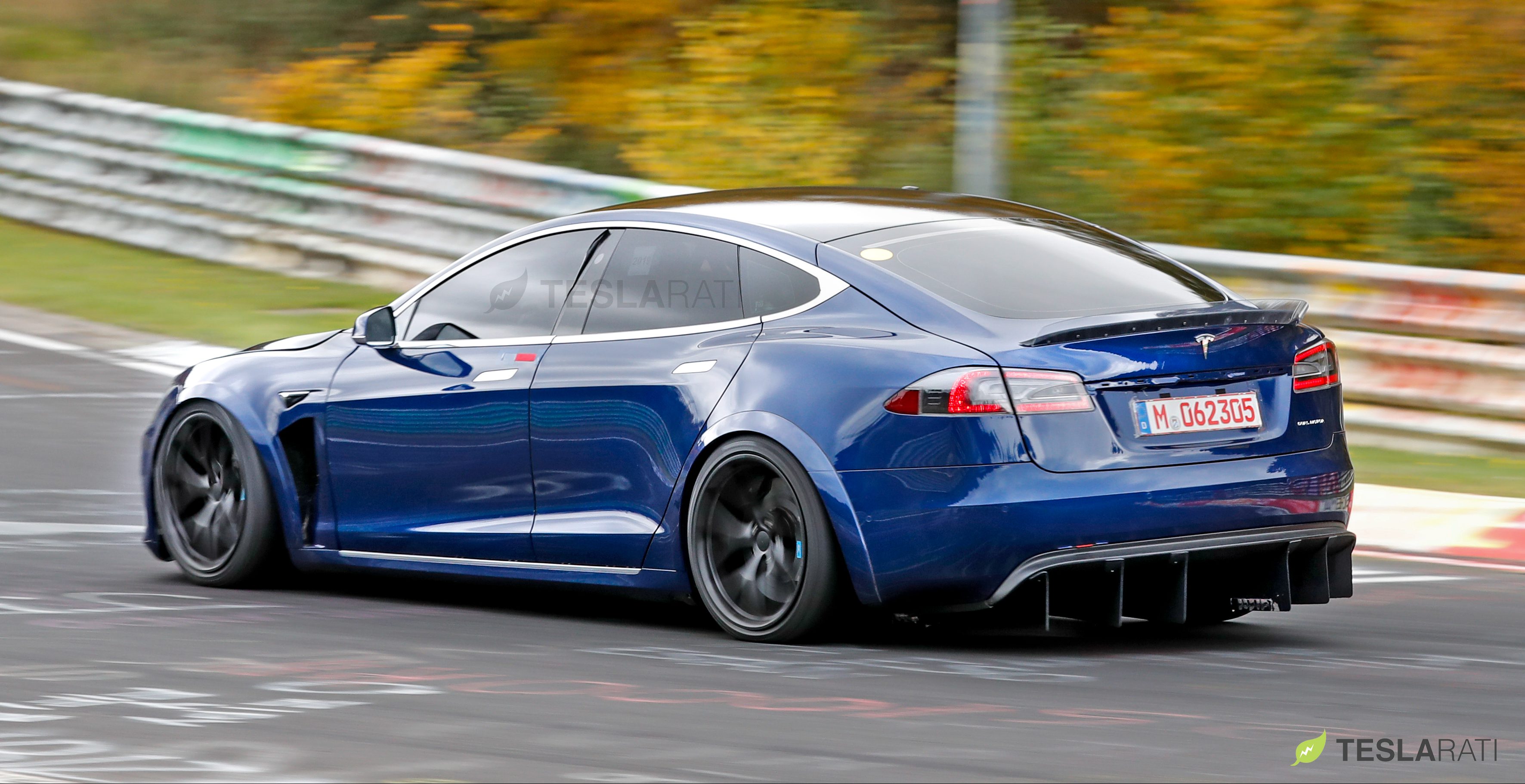

News
How Tesla’s Elon Musk dunks on the competition just as their momentum builds
It’s an emotion-filled, intense game. When you’re down the court. In the zone. Elon Musk goes up for the slam and WHAM!
Just when you least expected it.
Oh, that’s gotta hurt.
The script plays out time and time again. Tesla and SpaceX CEO Musk bursts into action. Like a runaway freight train. But with intent. Strategy. Musk charges in with a timely announcement to derail the momentum of his competition, just as they’re about to gain traction. Cheers for the competition become silence.
We were reminded of Musk’s mastery of the game this past week when a timely leaked email would inform the world that Tesla was preparing for volume production of its highly-anticipated Semi truck. Shares of Tesla shot up past $1,000 to raise the bar on its all-time high, while any trace of attention on a competing rival – Nikola – would be lost.

Electric-hydrogen commercial truck maker Nikola had just come off of a momentous week after going public in its Initial Public Offering.
While Musk’s announcement was surely a positive one for Tesla, there may have been some intent behind it. Just as Nikola’s stock began to climb, Musk derailed their momentum by announcing Tesla’s plan to prioritize the Semi truck production. It’s a classic page out of Musk’s successful playbook to leverage a competitor’s momentum, as media centers the conversation around a particular industry, before ripping the ball away from the competition and go in for the slam dunk. It has happened throughout his storied career. And it will continue to do so.
————————————
This is a preview from our weekly newsletter. Each week I go ‘Beyond the News’ and handcraft a special edition that includes my thoughts on the biggest stories, why it matters, and how it could impact the future. Please consider subscribing. It’s FREE!
————————————
Porsche Taycan. We drove it. We appreciated it and we were on the bandwagon that the Porsche Taycan and its “repeatable performance” was destined for the famed Nürburgring. It was one of the first stories I covered as a writer for Teslarati and I can remember it pretty vividly. The Taycan hit the Green Hell in Germany in August and reportedly set a track record for a four-door production vehicle. However, that story wouldn’t last long.
Not more than a couple of weeks later, on September 5, Musk announced the Model S would be arriving at the Nürburgring to test its performance at the notoriously difficult racetrack. But it surely didn’t stop there. Musk then stated that Tesla had been developing an entirely new version of the Model S behind the scenes and that the wide-body design was a brand new tri-motor setup of the company’s flagship sedan. It was called “the Plaid Powertrain,” and it ripped through the Ring in record time.

Just as Porsche was starting to gain some momentum as an EV competitor to Tesla, Musk ripped their title right out from under them. Within a few weeks, everyone was done talking about the Taycan and wanted to know more about the Plaid Model S. As of right now, it is still a car that has is relatively face-value details available, but we all know it is going to be fast.
Next, Rivian’s momentum was surely derailed by Musk when the company decided to unveil the Cybertruck. Rivian’s R1T was going to be “the next big thing” in the consumer pickup truck segment. Personally, I was pretty impressed with how many people knew about Rivian, because many friends who have little interest in the automotive sector as a whole knew who Rivian was. In California, this wouldn’t be as impressive. But I live in Pennsylvania, and it was pretty cool to hear people talk about Rivian in such a mainstream manner.
In November, Rivian had been holding more reservation events, developing its production facilities, filing patents, and really establishing itself as a real leader in the EV pickup market. Then came along the Cybertruck.
The Cybertruck’s design and its dystopian-like unveiling event were enough to derail Rivian’s momentum. Nobody was talking about Rivian, and even to this day nearly eight months later, the Cybertruck is still the hot topic. While Rivian remains a relevant character in the electric pickup truck community, the casual electric car fan is sharing articles about the Cybertruck, and not the R1T.
I’ll be honest, the space race rivalry between Musk and Bezos isn’t something I’ve followed as closely as the automotive stuff. But I remember when Bezos was on CNN in 2015 talking about his Blue Origin rockets being the first fully reusable rockets in the world. But SpaceX had successfully landed a reusable rocket in 2012. Not to mention, Musk’s words were often times reused by Bezos, who would pawn them off as his own idea. A video of that is available here.
https://youtu.be/Qe_TTI64fJA
Anyway, the proof is in the pudding. Musk has used other companies to time his announcements for groundbreaking products. He did it with the Plaid Model S, he did it with the Cybertruck, and he did it with the Semi. Momentum building is especially difficult in automotive manufacturing simply because most companies all share the same features and commonalities. It takes something truly special for people to get excited.
Elon has developed an interesting way to spread the word about his new products, and he’s basically used other companies to do it. Some might call it timely, some might call it rude. I call it smart.
—————————————————–
Please consider Subscribing and joining me next week as I go ‘Beyond the News’
—————————————————-

Elon Musk
Elon Musk and Tesla AI Director share insights after empty driver seat Robotaxi rides
The executives’ unoccupied tests hint at the rapid progress of Tesla’s unsupervised Robotaxi efforts.

Tesla CEO Elon Musk and AI Director Ashok Elluswamy celebrated Christmas Eve by sharing personal experiences with Robotaxi vehicles that had no safety monitor or occupant in the driver’s seat. Musk described the system’s “perfect driving” around Austin, while Elluswamy posted video from the back seat, calling it “an amazing experience.”
The executives’ unoccupied tests hint at the rapid progress of Tesla’s unsupervised Robotaxi efforts.
Elon and Ashok’s firsthand Robotaxi insights
Prior to Musk and the Tesla AI Director’s posts, sightings of unmanned Teslas navigating public roads were widely shared on social media. One such vehicle was spotted in Austin, Texas, which Elon Musk acknowleged by stating that “Testing is underway with no occupants in the car.”
Based on his Christmas Eve post, Musk seemed to have tested an unmanned Tesla himself. “A Tesla with no safety monitor in the car and me sitting in the passenger seat took me all around Austin on Sunday with perfect driving,” Musk wrote in his post.
Elluswamy responded with a 2-minute video showing himself in the rear of an unmanned Tesla. The video featured the vehicle’s empty front seats, as well as its smooth handling through real-world traffic. He captioned his video with the words, “It’s an amazing experience!”
Towards Unsupervised operations
During an xAI Hackathon earlier this month, Elon Musk mentioned that Tesla owed be removing Safety Monitors from its Robotaxis in Austin in just three weeks. “Unsupervised is pretty much solved at this point. So there will be Tesla Robotaxis operating in Austin with no one in them. Not even anyone in the passenger seat in about three weeks,” he said. Musk echoed similar estimates at the 2025 Annual Shareholder Meeting and the Q3 2025 earnings call.
Considering the insights that were posted Musk and Elluswamy, it does appear that Tesla is working hard towards operating its Robotaxis with no safety monitors. This is quite impressive considering that the service was launched just earlier this year.
Elon Musk
Starlink passes 9 million active customers just weeks after hitting 8 million
The milestone highlights the accelerating growth of Starlink, which has now been adding over 20,000 new users per day.

SpaceX’s Starlink satellite internet service has continued its rapid global expansion, surpassing 9 million active customers just weeks after crossing the 8 million mark.
The milestone highlights the accelerating growth of Starlink, which has now been adding over 20,000 new users per day.
9 million customers
In a post on X, SpaceX stated that Starlink now serves over 9 million active users across 155 countries, territories, and markets. The company reached 8 million customers in early November, meaning it added roughly 1 million subscribers in under seven weeks, or about 21,275 new users on average per day.
“Starlink is connecting more than 9M active customers with high-speed internet across 155 countries, territories, and many other markets,” Starlink wrote in a post on its official X account. SpaceX President Gwynne Shotwell also celebrated the milestone on X. “A huge thank you to all of our customers and congrats to the Starlink team for such an incredible product,” she wrote.
That growth rate reflects both rising demand for broadband in underserved regions and Starlink’s expanding satellite constellation, which now includes more than 9,000 low-Earth-orbit satellites designed to deliver high-speed, low-latency internet worldwide.
Starlink’s momentum
Starlink’s momentum has been building up. SpaceX reported 4.6 million Starlink customers in December 2024, followed by 7 million by August 2025, and 8 million customers in November. Independent data also suggests Starlink usage is rising sharply, with Cloudflare reporting that global web traffic from Starlink users more than doubled in 2025, as noted in an Insider report.
Starlink’s momentum is increasingly tied to SpaceX’s broader financial outlook. Elon Musk has said the satellite network is “by far” the company’s largest revenue driver, and reports suggest SpaceX may be positioning itself for an initial public offering as soon as next year, with valuations estimated as high as $1.5 trillion. Musk has also suggested in the past that Starlink could have its own IPO in the future.
News
NVIDIA Director of Robotics: Tesla FSD v14 is the first AI to pass the “Physical Turing Test”
After testing FSD v14, Fan stated that his experience with FSD felt magical at first, but it soon started to feel like a routine.

NVIDIA Director of Robotics Jim Fan has praised Tesla’s Full Self-Driving (Supervised) v14 as the first AI to pass what he described as a “Physical Turing Test.”
After testing FSD v14, Fan stated that his experience with FSD felt magical at first, but it soon started to feel like a routine. And just like smartphones today, removing it now would “actively hurt.”
Jim Fan’s hands-on FSD v14 impressions
Fan, a leading researcher in embodied AI who is currently solving Physical AI at NVIDIA and spearheading the company’s Project GR00T initiative, noted that he actually was late to the Tesla game. He was, however, one of the first to try out FSD v14.
“I was very late to own a Tesla but among the earliest to try out FSD v14. It’s perhaps the first time I experience an AI that passes the Physical Turing Test: after a long day at work, you press a button, lay back, and couldn’t tell if a neural net or a human drove you home,” Fan wrote in a post on X.
Fan added: “Despite knowing exactly how robot learning works, I still find it magical watching the steering wheel turn by itself. First it feels surreal, next it becomes routine. Then, like the smartphone, taking it away actively hurts. This is how humanity gets rewired and glued to god-like technologies.”
The Physical Turing Test
The original Turing Test was conceived by Alan Turing in 1950, and it was aimed at determining if a machine could exhibit behavior that is equivalent to or indistinguishable from a human. By focusing on text-based conversations, the original Turing Test set a high bar for natural language processing and machine learning.
This test has been passed by today’s large language models. However, the capability to converse in a humanlike manner is a completely different challenge from performing real-world problem-solving or physical interactions. Thus, Fan introduced the Physical Turing Test, which challenges AI systems to demonstrate intelligence through physical actions.
Based on Fan’s comments, Tesla has demonstrated these intelligent physical actions with FSD v14. Elon Musk agreed with the NVIDIA executive, stating in a post on X that with FSD v14, “you can sense the sentience maturing.” Musk also praised Tesla AI, calling it the best “real-world AI” today.









